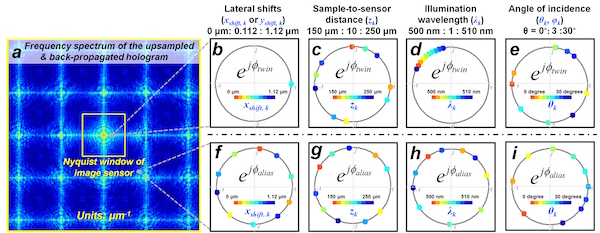Propagation phasor approach for holographic image (2016)
W. Luo, Y. Zhang, Z. Gorocs, A. Feizi and A. Ozcan (2016)

To achieve high-resolution and wide field-of-view, digital holographic imaging techniques need to tackle two major challenges: phase recovery and spatial undersampling. Previously, these challenges were separately addressed using phase retrieval and pixel super-resolution algorithms, which utilize the diversity of different imaging parameters. Although existing holographic imaging methods can achieve large space-bandwidth-products by performing pixel super-resolution and phase retrieval sequentially, they require large amounts of data, which might be a limitation in high-speed or cost-effective imaging applications. Here we report a propagation phasor approach, which for the first time combines phase retrieval and pixel super-resolution into a unified mathematical framework and enables the synthesis of new holographic image reconstruction methods with significantly improved data efficiency. In this approach, twin image and spatial aliasing signals, along with other digital artifacts, are interpreted as noise terms that are modulated by phasors that analytically depend on the lateral displacement between hologram and sensor planes, sample-to-sensor distance, wavelength, and the illumination angle. Compared to previous holographic reconstruction techniques, this new framework results in five- to seven-fold reduced number of raw measurements, while still achieving a competitive resolution and space-bandwidth-product. We also demonstrated the success of this approach by imaging biological specimens including Papanicolaou and blood smears.